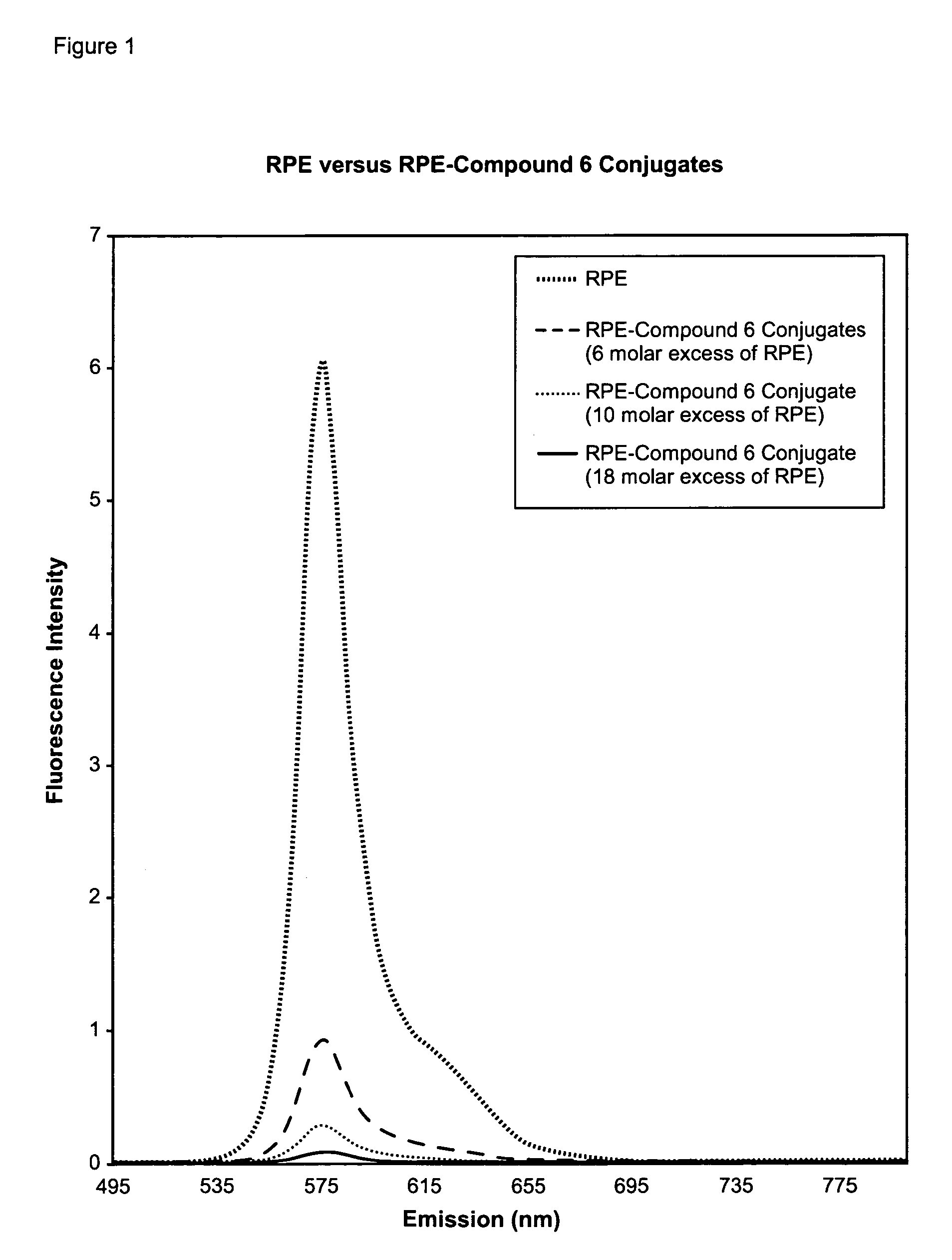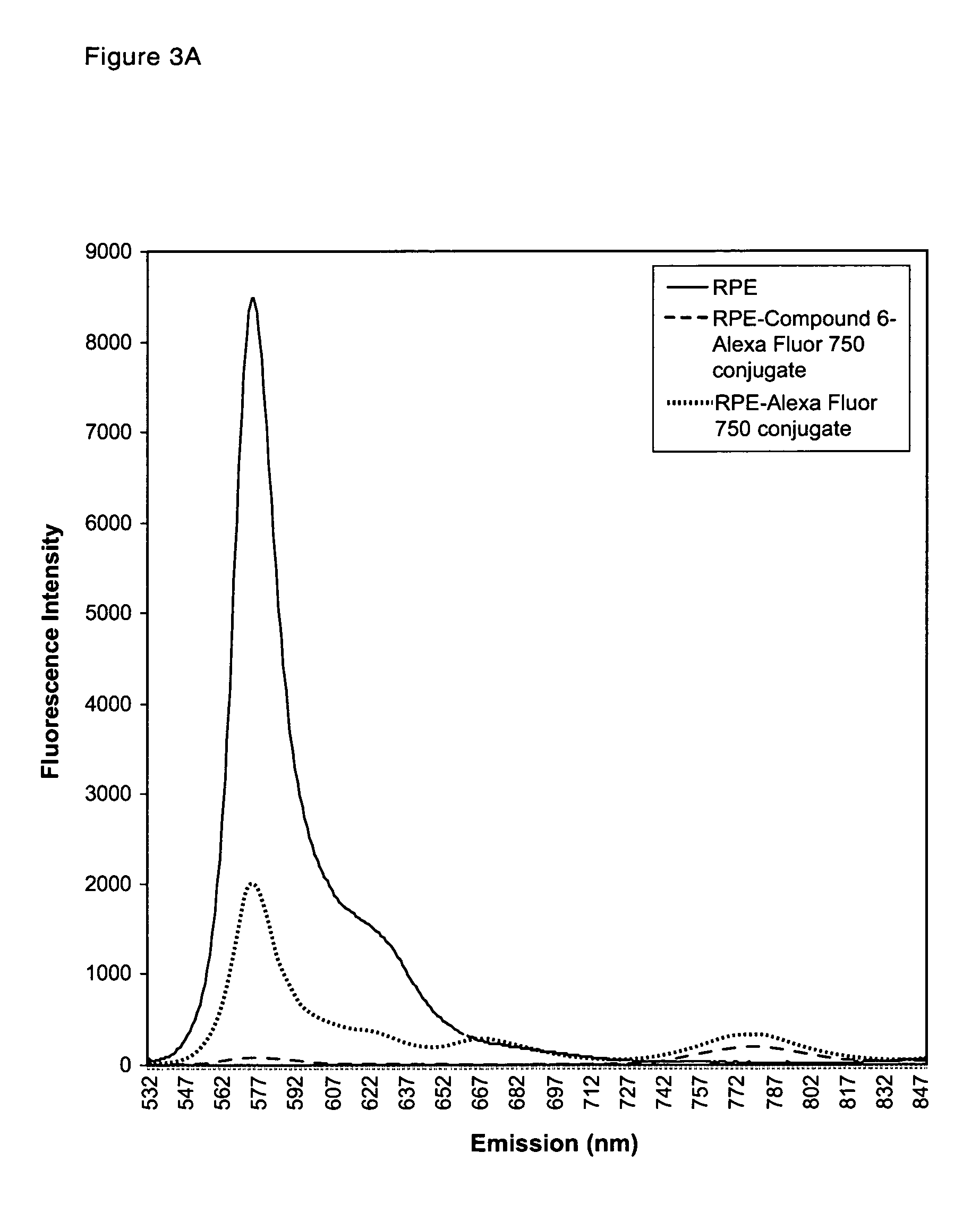Cyanine compounds and their application as quenching compounds
- Summary
- Abstract
- Description
- Claims
- Application Information
AI Technical Summary
Benefits of technology
Problems solved by technology
Method used
Image
Examples
example 1
Preparation of Compound 1
[0261]A mixture of 2 g of 1,2,3,3-3H-tetramethylindolium iodide and 1.6 g of terephthalic acid monomethyl ester chloride is heated in 20 mL of pyridine at 45 C overnight. The solvent is evaporated under reduced pressure and the crude product is purified on a silica gel column to give compound 1.
[0262]
example 2
Preparation of Compound 2
[0263]A mixture of 200 mg of Compound 1 and 0.18 mL of phosphorous oxychloride is heated in 5 mL of dichloroethane at reflux for 2 hours to generate the [2-chloro-2-(4-methoxycarbonylpheny)]vinyl-1,3,3-trimethylindolium chloride. This intermediate is then stirred with 0.3 g of 1-(5-carboxypentyl)-5-sulfo-2,3,3-trimethylindolium inner salt and 0.22 mL of triethylamine in several mL of DMF at room temperature overnight. The crude product is precipitated out by the addition of ethyl acetate and then purified by HPLC to give compound 2.
[0264]
example 3
Preparation of Compound 3
[0265]The [2-chloro-2-(4-methoxycarbonylpheny)]vinyl-1,3,3-trimethylindolium chloride is reacted with one equivalent of 2,3-dimethylbenzothiazolium tosylate and 3 equivalents of triethylamine in dichloroethane to obtain Compound 3.
[0266]
PUM
| Property | Measurement | Unit |
|---|---|---|
| wavelength | aaaaa | aaaaa |
| wavelengths | aaaaa | aaaaa |
| pH | aaaaa | aaaaa |
Abstract
Description
Claims
Application Information
 Login to View More
Login to View More - R&D
- Intellectual Property
- Life Sciences
- Materials
- Tech Scout
- Unparalleled Data Quality
- Higher Quality Content
- 60% Fewer Hallucinations
Browse by: Latest US Patents, China's latest patents, Technical Efficacy Thesaurus, Application Domain, Technology Topic, Popular Technical Reports.
© 2025 PatSnap. All rights reserved.Legal|Privacy policy|Modern Slavery Act Transparency Statement|Sitemap|About US| Contact US: help@patsnap.com



